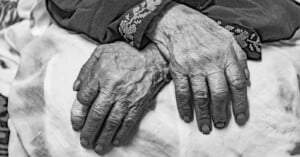
Protestors Shut Down Palestinian Photo Exhibit at Massachusetts Library
Photography exhibitions are, in general, quaint affairs offering a space for people to contemplate and reflect on the art in front of them.

Photography exhibitions are, in general, quaint affairs offering a space for people to contemplate and reflect on the art in front of them.
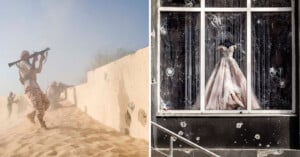
Photojournalist Gabriele Micalizzi's first exhibition is now open in Milan, Italy, at the renowned 29 Arts in Progress gallery.
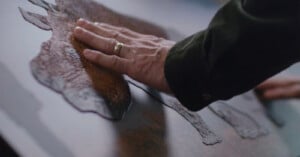
This spring, camera maker Canon will hold a unique tactile exhibit to allow visually impaired people to enjoy photography.
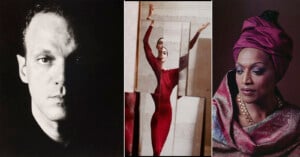
The late American fashion photographer David Seidner (1957-1999) was influential in his life, but his work has, sadly, gone underappreciated in the decades since his passing. The International Center of Photography (ICP) in New York City aims to change that through an ongoing exhibition of Seidner's work called "Fragments."
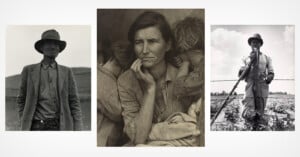
The image is iconic. A mother, surrounded by her children brings a hand to her face. A look of worry clouds her visage. This transcendent image, along with other works by its photographer, Dorothea Lange, are on display at the National Gallery of Art in Washington D.C.
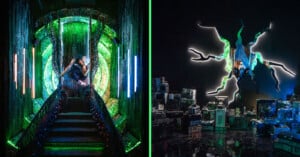
Multimedia artist and activist Benjamin Von Wong is back with another incredible project to confront an environmental disaster. Earlier this year, Von Wong artfully exposed bitcoin's negative impact on climate change, and now the artist is turning his creative energy toward electronic waste.

Commercial photographer Andrei Duman is back with another spectacular personal project. This time, Duman collaborated with acclaimed LEGO® artist Nathan Sawaya for the Organogenesis: Building Blocks of Life project.
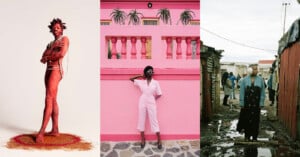
The NOW Gallery in London will present its annual Human Stories exhibition series, this year showcasing South African photographers.

The first exhibit of famed fashion photographer Patrick Demarchelier since his death opened at the Camera Work Gallery in Berlin this weekend and includes some photos that have never before been exhibited.
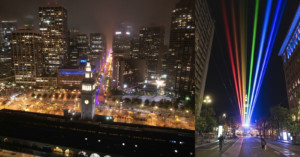
For three nights over the weekend of June 24, a 4.1-mile-long laser light installation depicting the Pride flag stretched down Market Street from the Ferry Building in San Francisco.
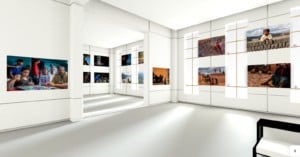
Last month my fiancé (Corina) and I (Matt) did something we’d never done before. We ran a virtual photography exhibition.
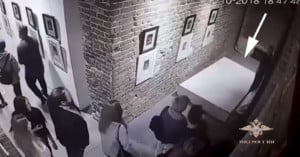
Careless selfies have claimed more casualties. A pair of artworks by renowned painters Salvador Dali and Francisco Goya were damaged over in Russia after a group of girls posing for selfies accidentally knocked over the structure on which they were being displayed.
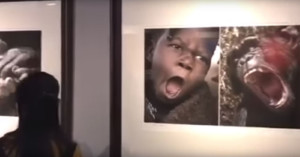
A museum in China has taken down a photo exhibition that placed photos of black people and African animals side-by-side. The exhibit had attracted outrage from around the world after images of it were shared online.
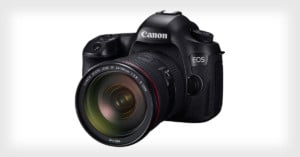
Canon announced back in September 2015 that it's building a 120-megapixel DSLR. This week, at Canon Expo in Shanghai, China, Canon is showing off the capabilities of the camera in an exhibit.
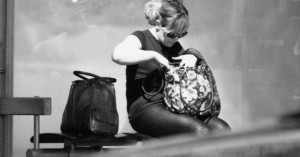
In 2011, photographer Jessamyn Lovell was at San Francisco gallery SF Camerawork when her wallet was stolen. Not long after, the unauthorized charges started pouring in.
Infuriated at what was taking place, Lovell decided to track down her thief rather than simply replace her cards and move on with her life. In doing so, she turned this art gallery mishap into an art project all its own.
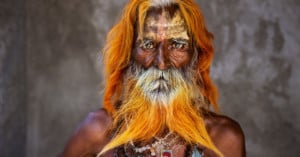
There are few photographers out there as well-known as the iconic Steve McCurry. His Afghan Girl portrait earned him world-wide fame and recognition, but all of his work -- from the most iconic to the largely unseen -- speaks to his uncanny eye for capturing emotion and composing portraits that are second to none.
And now, four decades of the great man's work is being summed up in a 150-portrait retrospective called Oltre lo Sguardo, on display at the beautiful Villa Reale di Monza in Italy until April 6, 2015.
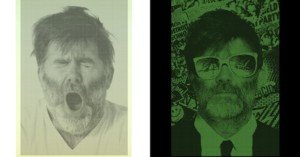
In an attempt to explore "duplicity in two-dimensional surfaces," illustrator, designer and typographer Alex Trochut invented and patented a way to print two images on the same surface. His photography exhibit Binary Prints, puts the newly invented method to work, revealing a different portrait when viewed in the light or dark.

A state-funded museum in Paris is drawing widespread criticism for a new exhibit of photos that show sympathetic portrayals of Palestinian suicide bombers.
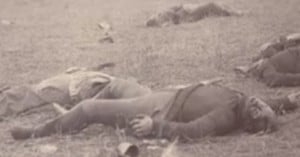
The Civil War wasn't the first war to be photographed, but the leaps and bounds that photographic technology had taken leading up to the war in 1861 enabled American photographers at the time to come out en masse when news of the attack on Fort Sumter came.
Many photos came out of the war, showing everything from the horrifically scarred back of an escaped slave, to the bravado of young confederate soldiers. In the video above, curator of the Metropolitan Museum of Art's "Photography and the American Civil War" exhibit Jeff L. Rosenheim walks us through some of those photos, explaining the role each one played in documenting four years of bloodshed.

William Eggleston didn’t invent color photography, but his landmark 1976 exhibition at the Museum of Modern Art gave it dignity, and began the four-decade process of acceptance by curators and collectors as an art form to rival oil painting.
Shot in 1970, “Untitled (Memphis)” – shown above – was one of the 75 photos in the show, and also featured on the cover of the catalogue. Now it’s included in a retrospective of Eggleston’s early work at the Metropolitan.
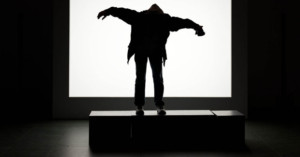
In December 2012, the Museum of Modern Art in New York City featured an interactive art installation by Philip Worthington called "Shadow Monsters". The exhibit was created using a computer, a camera, two projectors, a light box, and some clever software. When visitors stepped in front of the light box, their shadows were magically transformed into creatures that were brought to life through sound and animation.
Photographer Joseph O. Holmes saw the unique exhibition as a photo project opportunity. However, instead of photographing the resulting monsters, he decided to turn the camera on the participants themselves, capturing their monster-making activities as a series of silhouettes.
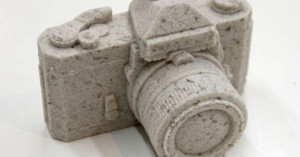
Artist Daniel Arsham has an exhibition at Philadelphia's Fabric Workshop Museum called Reach Ruin, which includes hundreds of cameras sculptures created out of plaster, glass, stone, and sand.
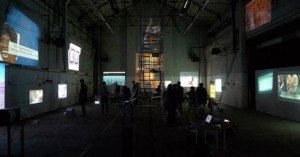
"BYOB" is an initialism that's readily understood by college students who party. To artist Rafaël Rozendaal, however, it means something entirely different. In 2010, Rozendaal launched Bring Your Own Beamer, a series of novel "open source" art exhibitions in which participants were asked to bring their own beamers (AKA projectors). The recipe for the concept is extremely simple: find a venue with plenty of wall space (and outlets), invite a bunch of artists and art-lovers, and have images projected all over the walls for everyone to enjoy.
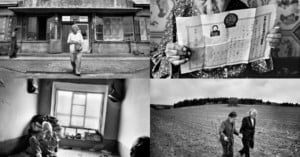
Nikon found themselves at the center of a controversy this last weekend after they decided to cancel a sensitive photography exhibit without giving a reason why. The exhibit, a photographic documentary on the theme of "Comfort Women" (Korean women used as sex slaves during WWII in Japan), was put together by Korean photographer Ahn Sehong and set to start on June 26th at the Nikon Salon in Tokyo -- until Nikon cancelled it.
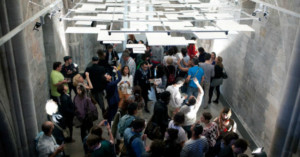
For her most recent exhibition, Brooklyn-based Dutch photographer Anouk Kruithof wanted to do something revolutionary, to change the way we experience the typical art exhibit -- thus was born her exhibit "Untitled: I've Taken Too Many Photos, I've Never Taken Any Photos."
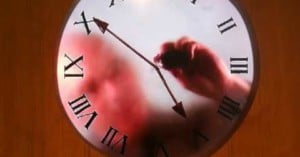
Artist Maarten Baas has a project called "Real Time" in which he creates one-of-a-kind clocks using a video camera and boatloads of patience and dedication. He creates 12-hour-long loops of people manually setting the time on various clocks... in real time. The video above shows his grandfather clock exhibit in which the hour and minute hands of the clock are painstakingly drawn in every minute of every hour for twelve hours.
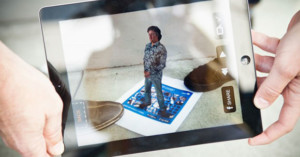
Typically, augmented reality falls somewhere between technological breakthrough and really cool thing to show your friends; but in the Science Museum in London's Making of the Modern World exhibit, augmented reality also takes up the mantle of education.
Using the $3 Science Stories app, visitors to the museum can point their iOS or Android devices at markers set in front of particular exhibits, and prompt a 3-dimensional James May (one of the hosts of BBC's Top Gear) to appear and explain the particulars of the display.
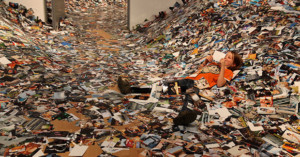
To show how the Internet is causing us to “drown in pictures”, artist Erik Kessels created an installation featuring …

Gigalinc is an “immersive photography” project by University of Lincoln student …
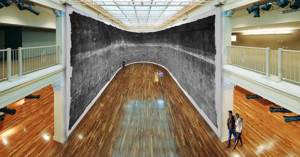
If you’ve ever wondered how an art gallery would display the world’s largest photo taken by the …